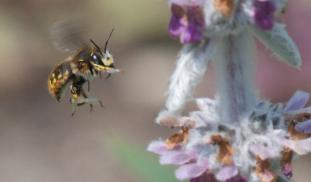Please wait...
About This Project
Is a recently introduced invasive species, the European wool-carder bee, threatening our native bumble bees?
Male wool-carder bees use evolved weapons on the base of their abdomen to ram into bumble bees trying to gain access to flowers. This project will determine if these interactions are hurting bumble bee lifetime reproductive success.
More Lab Notes From This Project

Browse Other Projects on Experiment
Related Projects
Using eDNA to examine protected California species in streams at Hastings Reserve
Hastings Reserve is home to three streams that provide critical habitat for sensitive native species. Through...
City smart: Are cities making birds smarter?
One cannot go to Florida and miss the White Ibises roaming golf, park and private lawns. But how does a...
How do polar bears stay healthy on the world's worst diet?
Polar bears survive almost entirely on seal fat. Yet unlike humans who eat high-fat diets, polar bears never...





